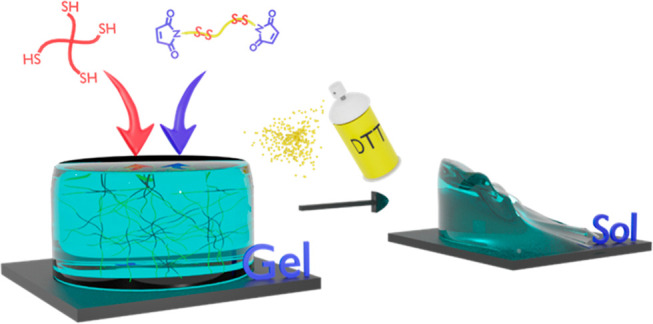- Record: found
- Abstract: found
- Article: found
Fast-Forming Dissolvable Redox-Responsive Hydrogels: Exploiting the Orthogonality of Thiol–Maleimide and Thiol–Disulfide Exchange Chemistry

Read this article at
Abstract

Fast-forming yet easily dissolvable hydrogels (HGs) have potential applications in wound healing, burn incidences, and delivery of therapeutic agents. Herein, a combination of a thiol–maleimide conjugation and thiol–disulfide exchange reaction is employed to fabricate fast-forming HGs which rapidly dissolve upon exposure to dithiothreitol (DTT), a nontoxic thiol-containing hydrophilic molecule. In particular, maleimide disulfide-terminated telechelic linear poly(ethylene glycol) (PEG) polymer and PEG-based tetrathiol macromonomers are employed as gel precursors, which upon mixing yield HGs within a minute. The selectivity of the thiol–maleimide conjugation in the presence of a disulfide linkage was established through 1H NMR spectroscopy and Ellman’s test. Rapid degradation of HGs in the presence of thiol-containing solution was evident from the reduction in storage modulus. HGs encapsulated with fluorescent dye-labeled dextran polymers and bovine serum albumin were fabricated, and their cargo release was investigated under passive and active conditions upon exposure to DTT. One can envision that the rapid gelation and fast on-demand dissolution under relatively benign conditions would make these polymeric materials attractive for a range of biomedical applications.
Related collections
Most cited references57

- Record: found
- Abstract: found
- Article: found
Injectable hydrogels for cartilage and bone tissue engineering
- Record: found
- Abstract: found
- Article: not found
Multifunctional, stimuli-sensitive nanoparticulate systems for drug delivery.
- Record: found
- Abstract: found
- Article: not found